IASTM Tool – Long
INSTRUMENT ASSISTED SOFT TISSUE MOBILIZATION – Enter a therapeutic world of unique healing and full body restoration with IASTM. Instrument Assisted Soft Tissue Techniques were developed to heal the body by intentionally producing micro-traumas in specific regions, bringing heat & inflammation to the area and engaging the natural healing process.
RESTORE OPTIMAL FUNCTIONING & MOBILITY – With our premium quality IASTM myofascial release tools, you’ll experience the incredible benefits of soft tissue mobilization. Muscles and tissues become sore, stiff and bound up whether from strain, injury, sports & athletics, or life’s general wear & tear. IASTM breaks up adhesions to restore mobility.
₨10,500.00
Instrument assisted soft tissue mobilization (IASTM) is a skilled myofascial intervention used for soft-tissue treatment. It is based on the principles of James Cyriax cross-friction massage
It is applied using instruments that are usually made of stainless steel with beveled edges and contours that can conform to different body anatomical locations and allows for deeper penetration. It is used for the detection and treatment of soft tissue disorders.
A proposed description for IASTM is “a skilled intervention that includes the use of specialized tools to manipulate the skin, myofascia, muscles, and tendons by various direct compressive stroke techniques”.
The technique itself is said to have evolved from Gua sha which is a method used in Chinese medicine. Gua sha uses instruments with smoothed edges to scrape the skin till red blemishes occur. However, Gua sha has different rationale, goals and application method from IASTM.
How does it work?
Instruments effectively break down fascial restrictions and scar tissue. The ergonomic design of these instruments provides the clinician with the ability to locate restrictions and allows the clinician to treat the affected area with the appropriate amount of pressure.
The introduction of controlled microtrauma to affected soft tissue structure causes the stimulation of local inflammatory response. Microtrauma initiates reabsorption of inappropriate fibrosis or excessive scar tissue and facilitates a cascade of healing activities resulting in remodeling of affected soft tissue structures. Adhesions within the soft tissue which may have developed as a result of surgery, immobilization, repeated strain or other mechanisms, are broken down allowing full functional restoration to occur.
Physio Shop Provides Excellent quality IASTM Tools in Pakistan.
Conditions For Which IASTM is Usually Used
- Medial Epicondylitis, Lateral Epicondylitis
- Carpal Tunnel Syndrome
- Neck Pain
- Plantar Fascitis
- Rotator Cuff Tendinitis
- Patellar Tendinitis
- Tibialis Posterior Tendinitis
- Heel Pain /Achilles Tendinitis
- DeQuervain’s Syndrome
- Post-Surgical and Traumatic Scars
- Myofascial Pain and Restrictions
- Musculoskeletal Imbalances
- Chronic Joint Swelling Associated with Sprains/Strains
- Ligament Sprains
- Muscle Strains
- Non-Acute Bursitis
- RSD (Reflex Sympathetic Dystrophy)
- Back Pain
- Trigger Finger
- Hip Pain (Replacements)
- IT Band Syndrome
- Shin Splints
- Chronic Ankle Sprains
- Acute Ankle Sprains (Advanced Technique)
- Scars (Surgical, Traumatic)
Contraindications
- Open wound (unhealed suture site)
- Unhealed fracture
- Thrombophlebitis
- Uncontrolled hypertension
- Patient intolerance/hypersensitivity
- Hematoma
- Osteomyelitis
- Myositis ossificans
- Hemophilia
Precautions
- Anti-coagulant medications
- Cancer
- Varicose veins
- Burn scars
- Acute inflammatory conditions
- Kidney dysfunction
- Inflammatory condition secondary to infection
- Rheumatoid arthritis
- Pregnancy
IASTM Physiology & Benefits
Physiological Mechanism
Studies have addressed the benefits of IASTM at the cellular level. The inflammatory response initiated through micro trauma to the affected tissues result in increased fibroblast proliferation, collagen synthesis, maturation and the remodeling of unorganized collagen fiber matrix following IASTM application. Which result in a breakdown of scar tissues, adhesions and facial restrictions.
Fibroblast is considered the most important cell in the extracellular matrix (ECM). The repair, regeneration and maintenance of soft tissue take place in the ECM. The fibroblast synthesizes the ECM, which includes collagen, elastin and proteoglycans, among many other essential substances. Fibroblasts have the ability to react as mechanotransducers, which means they are able to detect biophysical strain (deformation) such as compression, torque, shear and fluid flow, and create a mechanochemical response.
Gehlsen et al investigated the effects of 3 separate IASTM pressures on rat Achilles tendons. They concluded that fibroblast production is directly proportional to the magnitude of IASTM pressure used by the clinician. Davidson et al supported Gehlsen et al. by concluding that IM significantly increased fibroblast production in rat achilles tendons by using electron microscopy to analyze tissue samples following IM application.
IASTM have a neurophysiological effect as it stimulates mechanosensitive neurons through skin deformation by the instrument. Mechanosensitive neurons include mechanoreceptors which are responsible for two-point discrimination and mechano-nociceptors which are responsible for pain perception.
A study by Weiqing Ge, found the IASTM changed the neural activity of the large mechanoreceptor neurons affecting the two-point discrimination. Another study by Scott W. Cheatham et al, studies the effect of IASTM on DOMS (delayed onset muscle soreness) and the results found a decrease in the area of 2 point discrimination suggesting improved local tactile sense through mechanoreceptors stimulation and a decrease in the pain pressure threshold which suggest that light IASTM modulated the nociceptors ( small pain fibers) activity.
IASTM affects the vascular response to the injured soft tissue, through increasing the blood flow. As evident by Loghmani et al, who studied the effect of IASTM on the knee MCL in rats, and found increase in tissue perfusion and increase in the proportion of arteriole-sized blood vessels in the treated leg.
Practical Application
IASTM can’t be done by itself, it must be combined with motion and strengthening program to enhance the tissues remodeling.
When IASTM is applied to goes through 6 steps
- Examination
- Warm-up, warm-up is done for 10-15 mins by light jogging, elliptical machine, stationary bike or an upper body ergometer
- IASTM, done at 30-60 degrees angle for 40-120 seconds
- Stretching, 3 reps for 30 seconds
- Strengthening, high repetitions with low load exercise
- Cryotherapy, 10-20 min
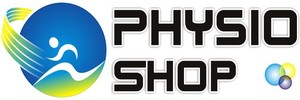
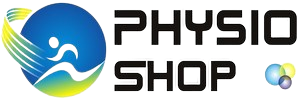

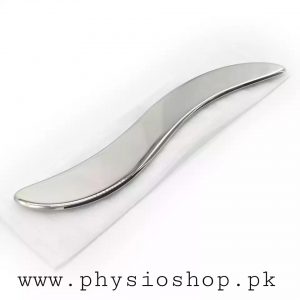
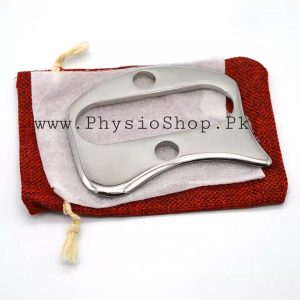

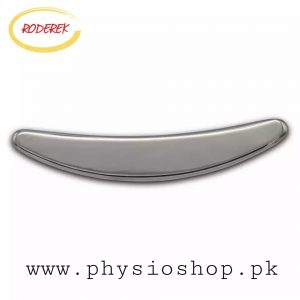
There are no reviews yet.